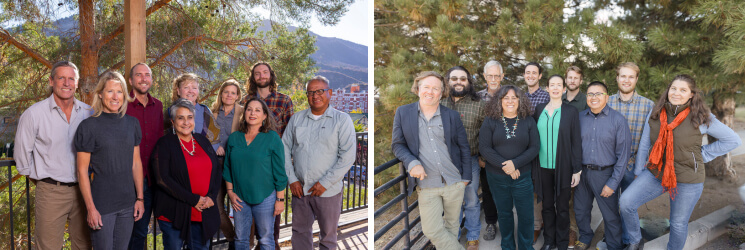In October, the staff of Durango, Colorado-based Ecosphere Environmental Services, Inc. joined Barr. A trusted environmental services partner to clients in a range of industries for 30 years, Ecosphere specializes in environmental compliance and permitting, natural resources surveys and studies, cultural resources management, and geographic information system (GIS) services.
The addition of Ecosphere expands Barr’s capabilities in the western U.S. in areas such as National Environmental Policy Act (NEPA) and Endangered Species Act (ESA) analyses, and Clean Water Act (CWA) compliance and permitting. Ecosphere has offices in Durango and Pagosa Springs, Colorado; and Albuquerque and Farmington, New Mexico, all of which Barr has retained.
“We’re excited to welcome the staff of Ecosphere to our growing team,” said Barr’s president and CEO, Ward Swanson. “Ecosphere’s talented, experienced employees will enhance our ability to serve clients in the Four Corners region and beyond—they’re similarly focused on delivering exceptional outcomes for clients.”
Staff of the combined organization are committed to providing Ecosphere’s clients with a smooth transition and uninterrupted project support, along with access to Barr’s additional capabilities and services.
 Barr welcomes staff from Ecosphere’s offices in Durango, Colorado (left); Pagosa Springs, Colorado; Albuquerque, New Mexico (right); and Farmington, New Mexico, enhancing Barr’s ability to serve clients in the Four Corners region and beyond.
Barr welcomes staff from Ecosphere’s offices in Durango, Colorado (left); Pagosa Springs, Colorado; Albuquerque, New Mexico (right); and Farmington, New Mexico, enhancing Barr’s ability to serve clients in the Four Corners region and beyond.
Ecosphere Principal Mike Fitzgerald said, “We’re confident that this next chapter for Ecosphere clients and employees will be an outstanding one. Both Barr and Ecosphere enjoy strong reputations based on integrity, technical accuracy, and transparency, and we share a highly collaborative approach to our work.”
Ecosphere’s client base includes local and federal government agencies, public and private utilities, commercial developers, renewable energy producers, manufacturers, telecommunications companies, fuel and mining companies, real estate developers, banks, tribal organizations, and private landowners.
For more information about Barr’s expanded capabilities in the western U.S., contact our team.
About Mike Fitzgerald
Mike Fitzgerald, senior NEPA consultant, has three decades of experience with National Environmental Policy Act, Clean Water Act (CWA), and Endangered Species Act consulting and compliance. Over the course of his career, he’s managed thousands of environmental projects in the Rocky Mountain region and southwestern United States for a wide range of industries. With a biological background, Mike has expertise in planning and executing biological- and aquatic-resource inventories and assessments. He also has experience with CWA alternatives analyses associated with individual permits. Prior to joining Barr, Mike owned and led Ecosphere Environmental Services, Inc., now part of Barr. Under his guidance, Ecosphere flourished, earning a reputation for conducting sound environmental science that clients can trust. Mike is excited to continue delivering high quality, collaborative support to current clients as part of the Barr team and to expanding these services into additional markets and regions.